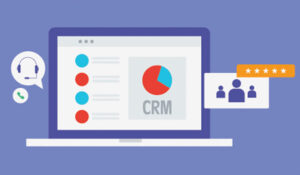Helen Billingham of Enghouse Interactive explores the benefits of integrating your CRM with your telephony system.
Consumers today expect a personalised service that recognises and values them, however they make contact.
As part of this, they want organisations to use the information they have within their customer relationship management (CRM) software to provide a personalised experience, tailored around their buying preferences and previous interaction history when getting in touch through channels such as the phone.
Equally, organisations want to deliver a more joined-up, efficient and engaging service by breaking down silos and providing agents with complete, up-to-date information when they speak to consumers on the phone.
All of this makes integrating your CRM solution (such as Salesforce) with your voice channel vital to business, delivering benefits in four key areas.
1. Improving the Experience by Enabling a 360-Degree Customer View
Truly understanding your customers means bringing together all the information you hold on them, and being able to use it to improve their experience. Yet 42% of agents surveyed by Forrester said they were unable to resolve customer issues efficiently as they couldn’t easily access complete customer information.
This unintegrated view has clear business consequences – in the same survey, 45% of customers said a lack of prompt support was the primary reason for abandoning a transaction.
By integrating CRM with your voice channel, you can break down silos and make it easier for agents to access and action the data within your platform. For example, agents can start a customer phone call via a single click from your CRM and add notifications and information directly while the call is taking place. All of this makes the experience seamless for both the agent and the customer.
2. Giving Your Agents the Complete Picture to Improve Efficiency
In many organisations, agents have to waste valuable time moving between different applications to find the information they need to interact with customers. In fact, research from ContactBabel estimates that this switching between solutions costs UK contact centres £5.8bn every year.
This slows down the speed at which agents can interact with customers, leading to inefficiency, and frustrating both consumers and agents themselves.
By integrating your customer contact or telephony system with CRM, agents no longer have to log into multiple applications as they have all the customer information they need at their fingertips, boosting efficiency and satisfaction.
At the same time, they can be confident that data is timely and accurate and will be automatically updated after their call finishes, without the need to navigate through multiple systems. This can reduce call times by up to 20 seconds per call while allowing agents to concentrate on the customer, building empathy and deepening customer rapport.
3. Ensuring You Deliver an Omnichannel Approach
While we live in a multichannel world, telephony still makes up two-thirds of inbound interactions to UK contact centres and is particularly crucial to consumers when they have urgent or complex queries or require reassurance, such as during the current pandemic.
However, at the same time, consumers want to be able to choose from a wide range of channels, depending on their circumstances, meaning that businesses must offer an omnichannel approach to meet their expectations.
According to ContactBabel’s latest UK Customer Experience Decision-Makers’ Guide, 51% of B2C and 62% of B2B companies are therefore planning to invest in digital channels, such as email and chat, which are growing in popularity.
With finite resources, organisations need to balance their investments and ensure that they can capitalise on their existing telephony platform while still enhancing digital channels. Integrating CRM and telephony helps here.
It delivers significant ROI while requiring a relatively small investment and minimal work, at the same time enhancing the service you provide and increasing agent productivity. This still leaves a substantial amount of your resources available to invest in digital channels.
4. Enabling Greater Efficiency Across the Whole Organisation
Successful businesses need to be agile, flexible and focused on the customer. That means they need to be able to integrate technology, information and communication across the whole organisation to deliver a seamless experience to customers and prospects.
Linking CRM and telephony supports this agility, helping improve the efficiency of multiple departments, not just employees in your contact centre. For example, having instant access to customer data can benefit sales teams when they are reaching out to prospects, enabling them to create personalised offers based on their interests or purchase history.
Finance departments have access to a full transaction history when calling regarding billing and payments, while managers are able to carry out meaningful conversations with customers based on a complete view of their interactions with your business.
Thanks to CRM and telephony integration, organisations can provide full customer information to every relevant employee when they are making a call. This increases engagement with customers and ensures that there is a seamless handover between back-office and front-office personnel.
Bringing together telephony and CRM delivers efficiency benefits to businesses while boosting customer satisfaction, all while capitalising on your existing investment in both solutions.
This blog post has been re-published by kind permission of Enghouse Interactive – View the Original Article
For more information about Enghouse Interactive - visit the Enghouse Interactive Website
Call Centre Helper is not responsible for the content of these guest blog posts. The opinions expressed in this article are those of the author, and do not necessarily reflect those of Call Centre Helper.
Author: Enghouse Interactive
Published On: 2nd Nov 2020 - Last modified: 3rd Nov 2020
Read more about - Guest Blogs, Enghouse Interactive






 Enghouse Interactive delivers technology and expertise to help bring your customers closer to your business through its wide range of customer contact solutions.
Enghouse Interactive delivers technology and expertise to help bring your customers closer to your business through its wide range of customer contact solutions. 








